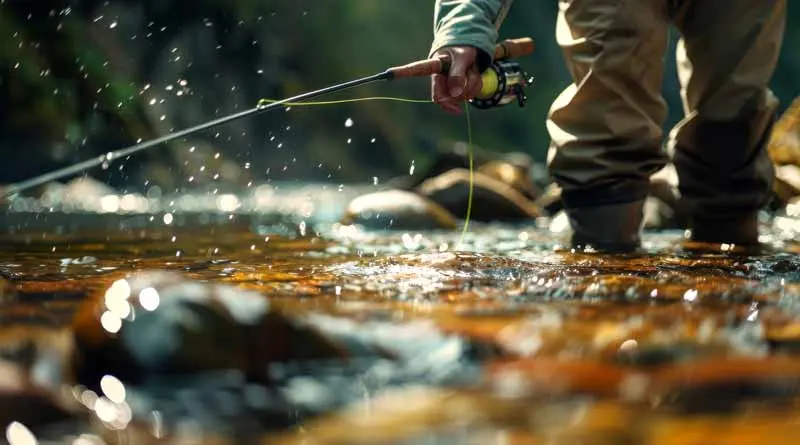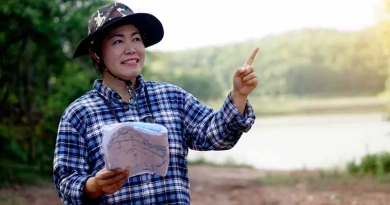
How Do I Improve My Casting Accuracy?
Hitting the right spot
Early in the morning by the river, the mist still clinging to the surface, I unspooled my line, preparing for the day’s first cast. As I flicked the rod, watching the lure arch beautifully then plop awkwardly far from the intended spot, the question arose: “How do I improve my casting accuracy?” It’s a query essential not just to the sport of fishing but also to the heart of an angler seeking precision and harmony with the water.
Understanding the Significance of Accurate Casting
Casting accuracy is more than a skill—it’s the bridge between a mere attempt and a successful catch. It involves understanding the mechanics of your movements, the environment, and the gear.
Purpose of Accurate Casting
Precision in casting significantly increases your chances of placing your lure exactly where fish are likely to bite. This involves targeting specific areas, such as:
- Near Underwater Structures: Fish often congregate around structures like logs, rocks, or submerged vegetation, seeking shelter and ambush points for prey.
- Shady Spots: During sunny days, fish may retreat to shady areas provided by overhanging trees or docks to stay cool and hidden.
- Alongside Riverbanks: Riverbanks often provide natural feeding grounds for fish, where insects and other prey are more accessible.
Accurate casting allows anglers to position their lures in these optimal spots, increasing the likelihood of attracting a bite.
Challenges of Casting Accuracy
Mastering casting accuracy involves overcoming several challenges:
- Wind: Wind can alter the trajectory of your cast, pushing your line off course. Understanding how to adjust for wind is crucial for maintaining accuracy.
- Current: Water currents can also impact where your lure lands and how it behaves once in the water. Adjusting your cast to account for current flow helps maintain lure presentation.
- Type of Gear: The rod, reel, and line must be compatible and appropriate for the type of fishing. Mismatched gear can affect the control and smoothness of your cast, making accuracy difficult.
Exploring the Options and Overcoming Obstacles
The journey to improve casting accuracy can be as daunting as it is critical. Here are some strategies to tackle the most common obstacles:
Gear Compatibility
Ensuring your rod, reel, and line are harmoniously matched is fundamental.
- Rod: For beginners, a medium-action rod is generally most forgiving and versatile. It offers a balance between power and flexibility, making it easier to cast accurately.
- Reel: Match your reel to the rod, ensuring it is suitable for the type of line you plan to use. The balance between the rod and reel affects the overall feel and control during casting.
- Line: Choose the right line for your fishing environment. Thinner lines offer less resistance and can be cast more accurately, while thicker lines provide more strength and control in challenging conditions.
Technique Refinement
Even slight adjustments in stance, grip, or timing can significantly impact accuracy.
- Stance: A stable and balanced stance provides a solid foundation for casting. Position your feet shoulder-width apart and align your body towards the target.
- Grip: Hold the rod firmly but not too tightly. A relaxed grip allows for smoother movement and better control over the rod’s action.
- Timing: The timing of your cast is crucial. Practice the motion to develop a smooth, fluid cast where the power is evenly distributed, ensuring the lure lands precisely where intended.
Environmental Factors
Elements like wind or water currents must be accounted for when planning a cast.
- Adjusting for Wind: Cast slightly upwind to compensate for wind drift. Use heavier lures to cut through the wind more effectively.
- Navigating Currents: Cast upstream and allow the current to carry the lure to the desired spot. Adjust the weight of the lure to ensure it reaches the correct depth and stays in position.
Implementing Effective Strategies for Enhanced Accuracy
Practice Regularly
Consistent practice is essential for developing accurate casting skills.
- Target Practice: Use markers or specific targets in a variety of settings to practice casting. This helps in understanding how different forces, like wind, affect the trajectory and distance of your cast.
- Consistent Technique: Repetition is key. Practice the same casting motion to develop muscle memory, ensuring each movement becomes more natural and controlled.
Optimize Your Gear
Choosing the right gear and maintaining it properly can enhance casting accuracy.
- Choose the Right Rod and Reel: For beginners, a medium-action rod is generally most forgiving and versatile. Ensure your reel is properly balanced with the rod and suited to the type of line you are using.
- Maintain Your Gear: Regular maintenance of your reel and ensuring your line is free from twists and knots helps in smoother casts. Clean and lubricate your reel regularly and replace the line when necessary.
Learn From Experts
Gaining insights from experienced anglers can accelerate your learning process.
- Fishing Clinics and Guides: Participate in workshops or hire a guide who can provide hands-on training and feedback on your casting technique.
- Video Tutorials: Many experienced anglers share their techniques through online platforms. Watching and emulating these can provide new insights and techniques.
Tools and Resources Required
To effectively improve your casting accuracy, consider equipping yourself with the following:
- Quality Fishing Gear: Invest in a reliable rod, reel, and appropriate lines.
- Practice Aids: Use cones, hoops, or homemade targets to mark target areas for practice.
- Educational Materials: Books, videos, and direct mentorship can all be invaluable resources.
Conclusion
As the sun climbed higher and the river’s surface glittered under its light, reflecting back my improved casts, the essence of accuracy became clear. Improving casting accuracy isn’t just about landing the lure where you want—it’s about engaging with the sport on a deeper level, understanding the rhythm of the water, the dance of the line, and the spirit of the fish. With every cast, we learn, we adapt, and we connect more deeply with the natural world around us, turning each moment by the water into a stroke of art painted with patience and precision.
Tools and Resources Required
To effectively improve your casting accuracy, consider equipping yourself with the following:
- Quality Fishing Gear: Invest in a reliable rod, reel, and appropriate lines.
- Practice Aids: Use cones, hoops, or homemade targets to mark target areas for practice.
- Educational Materials: Books, videos, and direct mentorship can all be invaluable resources.
As the sun climbed higher and the river’s surface glittered under its light, reflecting back my improved casts, the essence of accuracy became clear. Improving casting accuracy isn’t just about landing the lure where you want—it’s about engaging with the sport on a deeper level, understanding the rhythm of the water, the dance of the line, and the spirit of the fish. With every cast, we learn, we adapt, and we connect more deeply with the natural world around us, turning each moment by the water into a stroke of art painted with patience and precision.






